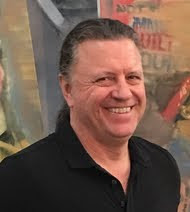An Elegy for Lou Reed
by Gregg Chadwick
I wrote this when I heard of Lou Reed's death in 2013. Three years on the thoughts still stand. Reposted as an elegy to an inspirational figure for so many.
"Lou Reed gave us the street and the landscape - and we peopled it."
- David Bowie in the documentary "Rock 'n' Roll Heart - Lou Reed"
Well hey, man, that's just a lie
It's a lie she tells her friends
'Cause the real song, the real song
Where she won't even admit to herself
The beatin' in her heart
It's a song lots of people know
It's a painful song
A little sad truth
But life's full of sad songs
Penny for a wish
But wishin' won't make you a soldier.
With a pretty kiss for a pretty face
Can't have it's way
Y'know tramps like us, we were born to pay
- From the beginning of the "Slipaway" section of Lou Reed's song Street Hassle.
Uncredited spoken vocals by Bruce Springsteen.
 |
| Annie Leibovitz Lou Reed and Laurie Anderson Coney Island, New York, 1995 Silver Print
When I found out about Lou Reed's death yesterday morning from Rolling Stone's twitter feed I turned to my Lou Reed playlist and put Reed's cover of Blind Lemon Jefferson's haunting blues number - See That My Grave is Kept Clean along with Antony and the Johnsons' song with Lou Reed - Fistful of Love, and Reed's elegiac urban hymn Berlin, on repeat.
For many of us who came of age and under the influence of the New York City of the 1970's and 1980's, Lou Reed was New York. While at NYU working on my grad degree in art, Reed's music provided an aural map for my explorations across the city. Reed's staccato talk/singing proved to be a gruff yet tender guided tour through my artistic and lovelorn ventures. Often while on the A train, Marty Fogel's Junior Walker fueled sax riff on Reed's Shooting Star would blare in my walkman's headphones. And Walk on the Wild Side always seemed to accompany me across Washington Square. |
 |
| Gregg Chadwick Ghosts of New Amsterdam 24"x36" oil on linen 2013 |
Not long after, Reed and his song Why Can't I be Good rumbled across the screen in Wim Wenders' cinematic sequel to Wings of Desire - Far Away So Close. Lou Reed's future wife, performance artist, composer and musician Laurie Anderson, also provided powerful music for the film. On a recent artistic excursion to Berlin, memories of these two films and Reed's album Berlin brought to light elements of the city that I had missed in the past.
Much like an author will write about an event or a place to learn what they feel, I will create a series of artworks to understand what I have seen. I pushed my interaction with Berlin into a recent ongoing series of monotypes fueled partly by the visions of Lou Reed, Wim Wenders, Bertolt Brecht, and David Bowie,
 |
Gregg Chadwick Brecht's Song 30"x22" monotype on paper 2011 |
+30%22x22%22+monotype+on+paper+2011.jpg) |
Gregg Chadwick Rauch Licht (Smoke Light) 30"x22" monotype on paper 2011 |
'I said, 'Who is that?' Reed recalled. 'So we set out to find him, and he was a few blocks away as it turns out.' ''
Lou Reed invited Antony to tour with him throughout 2003, and every night Antony would sing Candy Says, Reed's haunting tribute to Candy Darling. Caught in the video below, Lou Reed, one of the most influential musicians of the rock era, looks across towards Antony with an expression of pride and wonder. Lou seems mesmerized by what he described as Antony's double tracking and unusual harmonies. Reed had said that he could listen to Antony sing all day. In this video we witness a legend passing on his wisdom and inspiration to another.
Antony and Lou Reed Perform Candy Says
More Videos Below:
Lou Reed & David Bowie Discuss Reed's Album Transformer
in the documentary "Rock 'n' Roll Heart - Lou Reed"
Y'know tramps like us, we were born to pay
More at:
Lou Reed: The Rolling Stone Interview
Antony Finds His Voice
 |
Lou Reed greets Chuck Close in front of Close's 2012 tapestry Lou
published by Magnolia Editions; photo by Amanda Gordon/Bloomberg
August 2013
|

0 Comments:
Post a Comment
<< Home